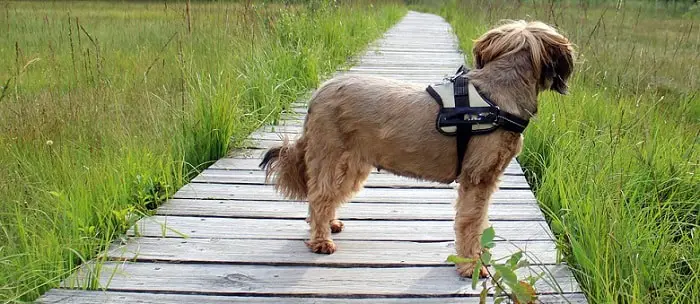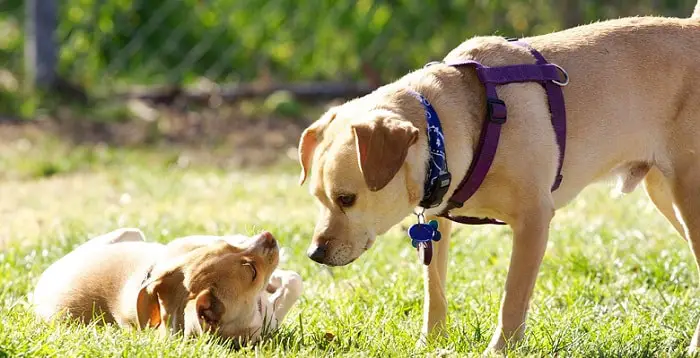Table of Contents
*This post may contain affiliate links. As an Amazon Associate we earn from qualifying purchases.
The subject of off leash dog training can be a bit controversial depending on where you live and what the dog-owning culture is like. Areas with high populations of working dogs may encourage off leash training especially if you have a lot of open land.
Hikers and campers also typically engage in off leash dog training for more challenging terrains where mobility is needed. Residential neighborhoods and areas with high car traffic discourage off leash training, with good reason.
If you decide to begin off leash dog training, the eight tips below will help you along the journey.

Tip 1: Know Your Dog
Off leash dog training is not for every dog. This comes down to breed and temperament. Some breeds, like those meant for chasing or hunting, may be more likely to run if taken off leash. This doesn’t mean you can’t train your dog, but it does present unique challenges.
You can expect for the process to take more time than with another breed without these instincts. Unaltered male dogs with little formal training may struggle with off leash training.
Dogs with anxious or aggressive tendencies will also need special attention and patience if you want to train them to go leash-free. You must think about your dog’s situation and habits before beginning the work.
Tip 2: Develop a Solid Signal
Signals and calls must be reliable and consistent with your dog before trying to take off the leash. You must trust your dog fully to come when called no matter what the distraction is.
In addition to a solid “come” signal, you may want to reinforce your “sit” and “stay” commands as well before taking the leash away completely. The Whole Dog Journal has activities you can do with your dog to build trust and recall skills with whatever signal you choose.
Tip 3: Start Slowly
You need to practice off leash skills in a safe area to start. You can start in a fenced in area or on a long leash. Dog parks are a good option if the park isn’t too busy. You want to reduce distractions.
Once you have found a good place to start, give your dog permission to go and explore. Then, call it back and reward it every time he returns. Keep doing this exercise until your dog is comfortable returning every time it is called.

Tip 4: Be Prepared with Rewards
Motivation is an important part of getting your dog ready to go off leash. Treats, favorite toys, and verbal praise from you will all help your dog associate off leash dog training with positive things. Make it fun for your dog to come back to you by being ready with an immediate reward.
Tip 5: Keep the Leash Nearby
As your dog progresses through his off leash dog training, you should keep the leash handy. Even once your dog is completely trained, you should keep the leash in an accessible place for unexpected situations. You must leash your dog when you are in an unfenced area with unfamiliar dogs or anytime you don’t feel 100% comfortable with the environment.
When in doubt, leash your dog for its safety. Because of this, make sure during your training you occasionally call your dog back to you in order to leash it. Make sure to heavily reward it when leashing it.
Tip 6: Pay Attention
You must always pay close attention to your dog and the surroundings when off leash. Your dog shouldn’t get too far in front or behind you during off leash training. It should never go out of your sight.
You want your pet close enough. This helps you easily notice your dog watching you as well. So, make sure you don’t get too far away either! This is a good sign and will help keep your dog safe in the event of an emergency need to leash it.

Tip 7: Re-Train Often
Even the best behaved off leash dogs should have refresher off leash dog training throughout their lives. You can do this by waiting for your dog to get very interested in something in your yard or on a trail and then calling it suddenly. Always continue to reward your dog when they do well with these surprise training exercises.
You should also keep your dog fresh by stopping occasionally and changing directions to make sure your dog is paying attention to where you are and stays close to you at all times. Taking your dog into new situations is also great training. Just make sure to keep a leash handy no matter your dog’s experience level just to be safe.
Tip 8: Always Be Patient
As discussed earlier, not all dogs will take to off leash dog training easily. Some dogs will require months or years of training before trust is complete. Rescue dogs from stressful situations make be incredibly anxious or confused when taken off leash.
Dogs that have never been trained by a patient owner may dart or refuse to come back when called. If you think your dog may exhibit these behaviors, spend more time on tips 1-4 before venturing to unsecured areas.
In Conclusion
Off leash dog training is an intense bonding experience for you and your canine best friend. The tips above will help you get started on your off leash adventure. Approach your dog’s training with an open mind and heart.
Trust will grow on both sides the more you work with your dog. Dogmantics has videos and tutorials on how to work with your dog off leash if you need a little more support.
Have you successfully trained your dog to walk off leash? Share your experiences below! Let us know what worked best for you. If you have more tips to add to the discussion, we look forward to reading them.


